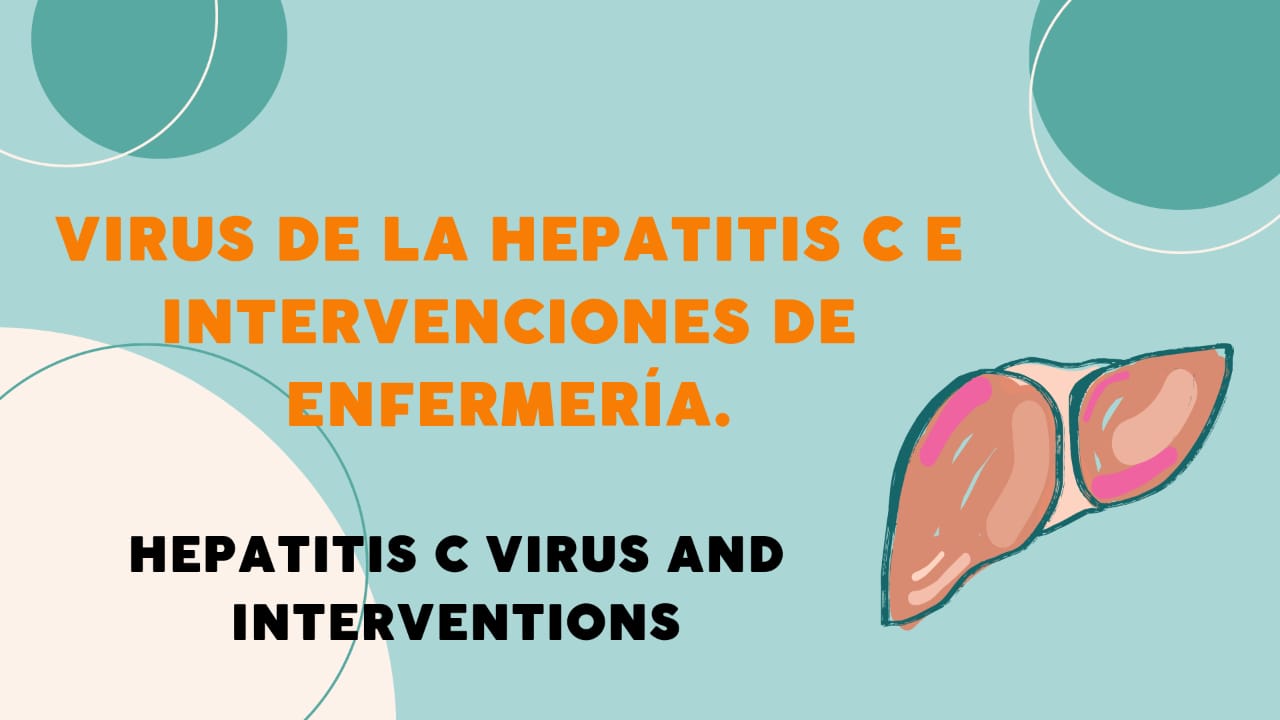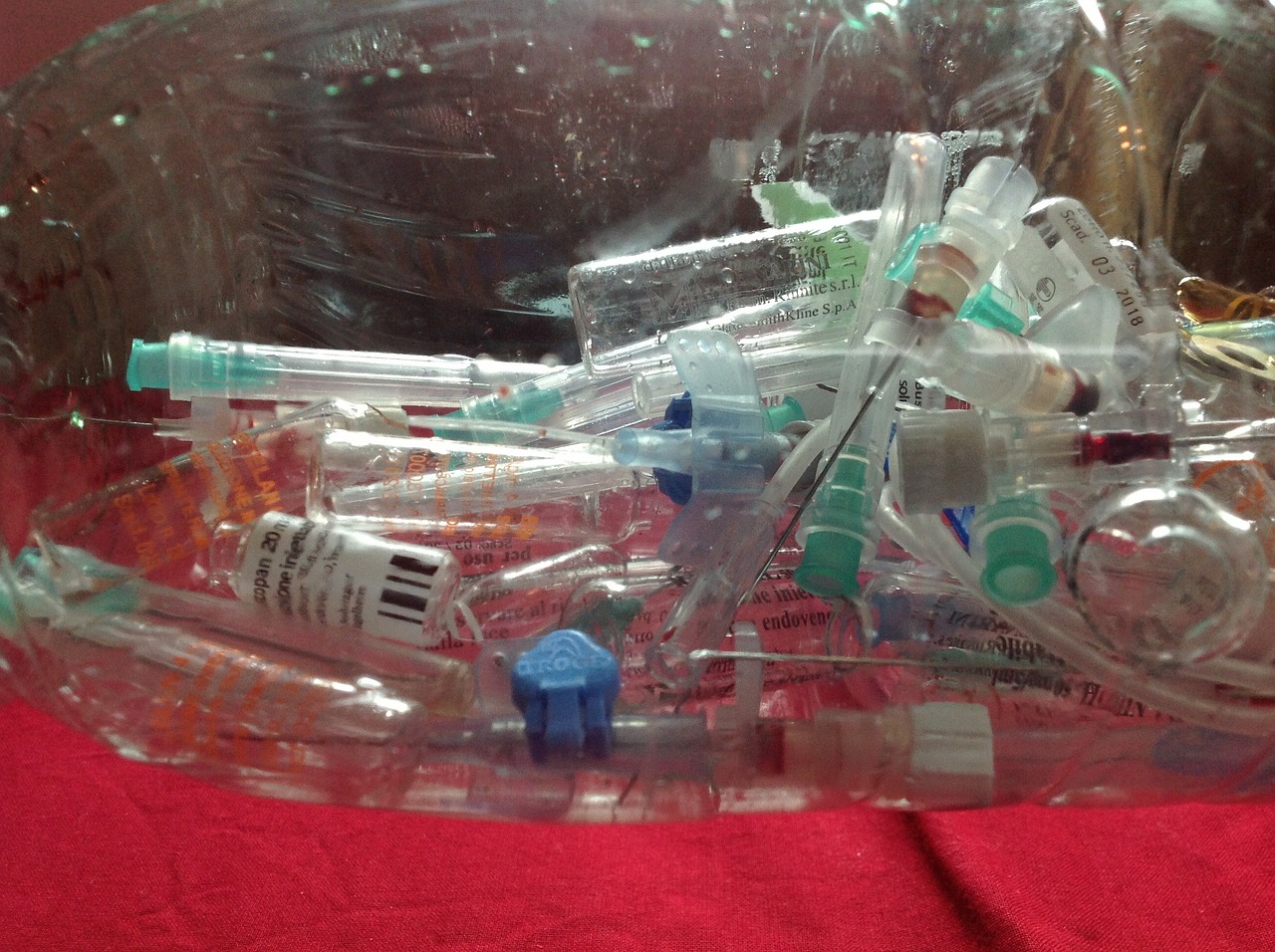
El virus de la hepatitis C es un problema de salud pública donde es necesario brindar información a la población en general respecto a la prevención y principales complicaciones, además de promover campañas de salud y vacunación en otros tipos de hepatitis al individuo de mayor riesgo. En esta condición, es necesario enfatizar las principales vías de contagio y los riesgos de contagio para el personal de salud.

Diseño creado en @Canva -Design created in @Canva.
La hepatitis C es un virus en el que el principal órgano afectado es el hígado, provocando así una inflamación y que, posteriormente, provoca un daño hepático grave. Gran parte de la población presenta esta enfermedad que puede ser tanto aguda como crónica, en esta última si no se trata con la medicación correcta puede terminar en complicaciones graves.
Muchas personas pueden presentar esta enfermedad y no saberlo, ya que algunas no presentan manifestaciones tempranas sino que aparecen años después cuando el hígado está gravemente afectado, existen factores de riesgo que aumentan la probabilidad de contraer el virus. Esto se refleja principalmente en pacientes con virus de inmunodeficiencia humana, en aquellas personas que reutilizan agujas entre ellos, un ejemplo es el mal uso de drogas intravenosas, transfusiones de hemocomponentes sin serología.

También en quienes mantienen relaciones sexuales sin protección con personas infectadas con el virus, por otro lado, el personal de salud podría contaminarse por contacto con la sangre del paciente, por lo que es importante el uso de guantes al momento de manipular o realizar cualquier procedimiento que implique contacto con la via hematica.
Como personal de salud debemos tener información sobre el manejo adecuado de estos pacientes, ya que existen altos riesgos al pinchar con agujas o cuando la sangre interfiere con alguna lesión de la piel. En los casos en que el personal de salud haya estado expuesto a fluidos, es importante realizar controles médicos y seguimiento con el mismo a fin de determinar la presencia del virus. Asimismo, debe seguir un tratamiento inicial indicado por el médico, por otro lado, si los resultados son negativos, no se requiere medicación.
Las principales manifestaciones clínicas son: fatiga, ictericia que se manifiesta en la piel y la esclerótica, pérdida de peso, hematomas en la piel, sangrado frecuente, en la hepatitis C crónica se han instaurado tratamientos antivirales, sin embargo, algunos pacientes pueden no responder al mismo. debido a complicaciones como la cirrosis hepática que puede conducir a la pérdida de la función hepática.

Cuando el paciente ingrese al área hospitalaria se debe orientar al familiar en cuanto a las medidas de higiene como lavado de manos, desechos de heces y orina, manteniendo el área desinfectada, evitando compartir artículos personales con otros pacientes, por otro lado se debe explicar cada procedimiento a realizar e intervenir en el apoyo emocional. Puede que se sienta angustiado, estresado sin saber cómo afrontar el problema. Por último, es fundamental protegerse en cada procedimiento como el lavado de manos, uso de guantes, desechar agujas y jeringas contaminadas con sangre, así como desinfectar los materiales que se encuentren en el servicio.

ENGLISH
The hepatitis C virus is a public health problem where it is necessary to provide information to the general population regarding prevention and main complications, in addition to promoting health and vaccination campaigns for other types of hepatitis for individuals at higher risk. In this condition, it is necessary to emphasize the main routes of infection and the risks of infection for health personnel.

Diseño creado en @Canva -Design created in @Canva.
Hepatitis C is a virus in which the main organ affected is the liver, thus causing inflammation and, subsequently, causing severe liver damage. A large part of the population has this disease, which can be both acute and chronic. In the latter, if it is not treated with the correct medication, it can end in serious complications.
Many people can present this disease and not know it, since some do not present early manifestations but appear years later when the liver is severely affected, there are risk factors that increase the probability of contracting the virus. This is reflected mainly in patients with human immunodeficiency virus, in those people who reuse needles among themselves, an example is the misuse of intravenous drugs, transfusions of blood components without serology.
Also in those who have unprotected sexual relations with people infected with the virus, on the other hand, health personnel could be contaminated by contact with the patient's blood, so it is important to use gloves when handling or performing any procedure. that involves contact with the hematic pathway.
As health personnel we must have information on the proper management of these patients, since there are high risks when puncturing with needles or when blood interferes with a skin lesion. In cases where health personnel have been exposed to fluids, it is important to carry out medical controls and follow-up with them in order to determine the presence of the virus. Likewise, you must follow an initial treatment indicated by the doctor, on the other hand, if the results are negative, medication is not required.
The main clinical manifestations are: fatigue, jaundice that manifests itself on the skin and sclera, weight loss, skin bruising, frequent bleeding, in chronic hepatitis C antiviral treatments have been established, however, some patients may not respond the same. due to complications such as liver cirrhosis which can lead to loss of liver function.
When the patient enters the hospital area, the family member should be oriented regarding hygiene measures such as hand washing, waste of feces and urine, keeping the area disinfected, avoiding sharing personal items with other patients, on the other hand, each procedure to perform and intervene in emotional support. You may feel anxious, stressed without knowing how to deal with the problem. Finally, it is essential to protect yourself in each procedure such as hand washing, use of gloves, discarding needles and syringes contaminated with blood, as well as disinfecting the materials found in the service.

La información que acabas de leer es de mi aprendizaje en la carrera de T.S.U en enfermería. - The information you just read is from my learning in the career of T.S.U in nursing.
Los separadores fueron realizados en PaintTool SAI. - The separators were made in Paint Tool SAI.
Las fotografias son de mi propiedad y fueron tomadas con mi teléfono Redmi Note 9. - The photographs are my property and were taken with my Redmi Note 9 phone.
Traducción de: Google traductor - Translation of: Google translator.

.jpeg)
Diseño creado en @Canva y @Bitmoji. -Design created in @Canva and @Bitmoji.



Nice
Nice
Thanks for your contribution to the STEMsocial community. Feel free to join us on discord to get to know the rest of us!
Please consider delegating to the @stemsocial account (85% of the curation rewards are returned).
You may also include @stemsocial as a beneficiary of the rewards of this post to get a stronger support.
Muchas gracias por el apoyo equipo de curación. Saludos 🤗